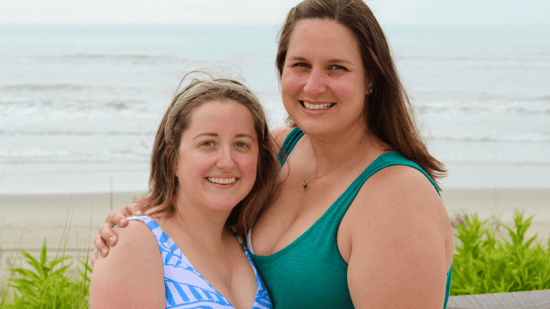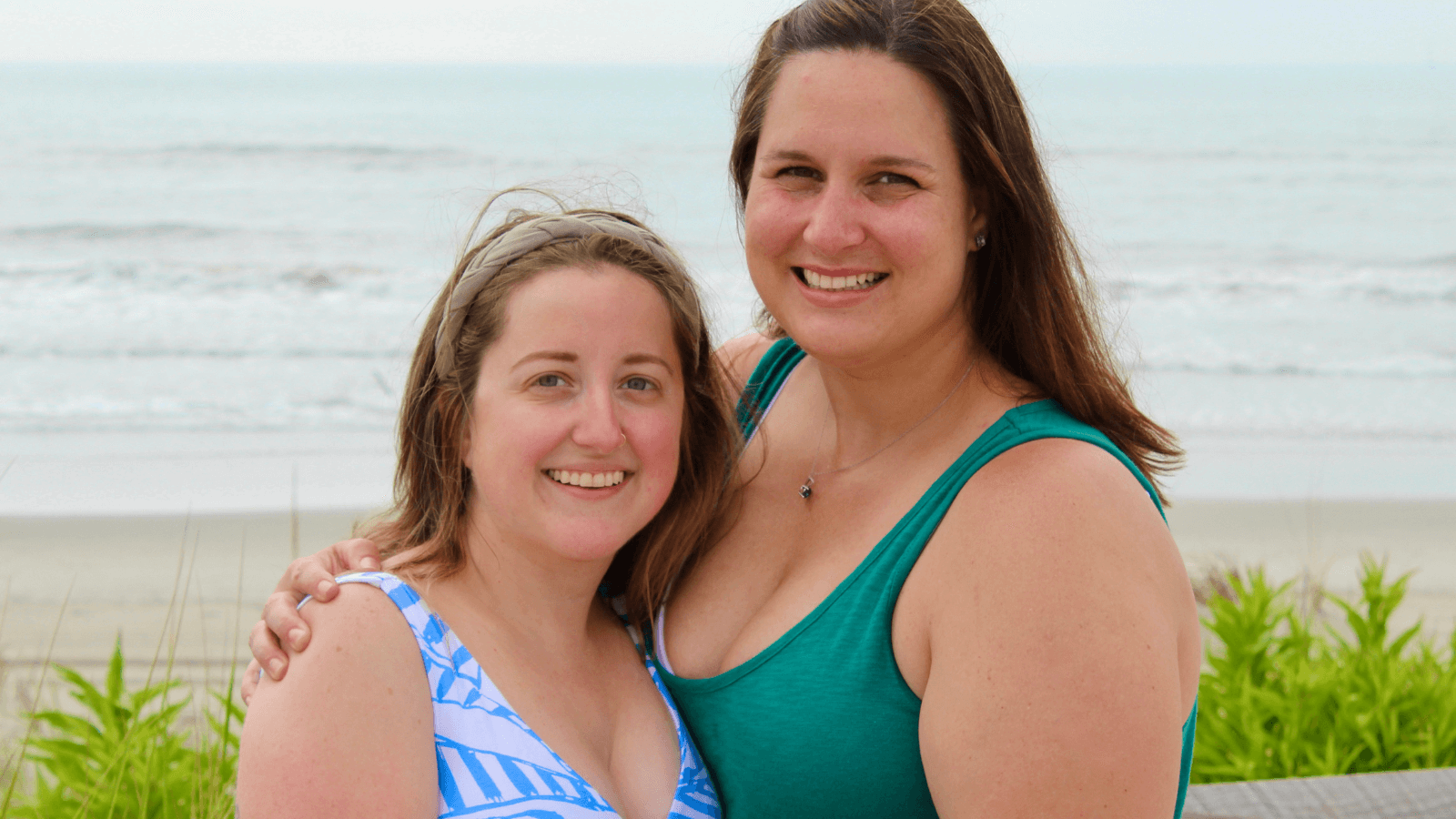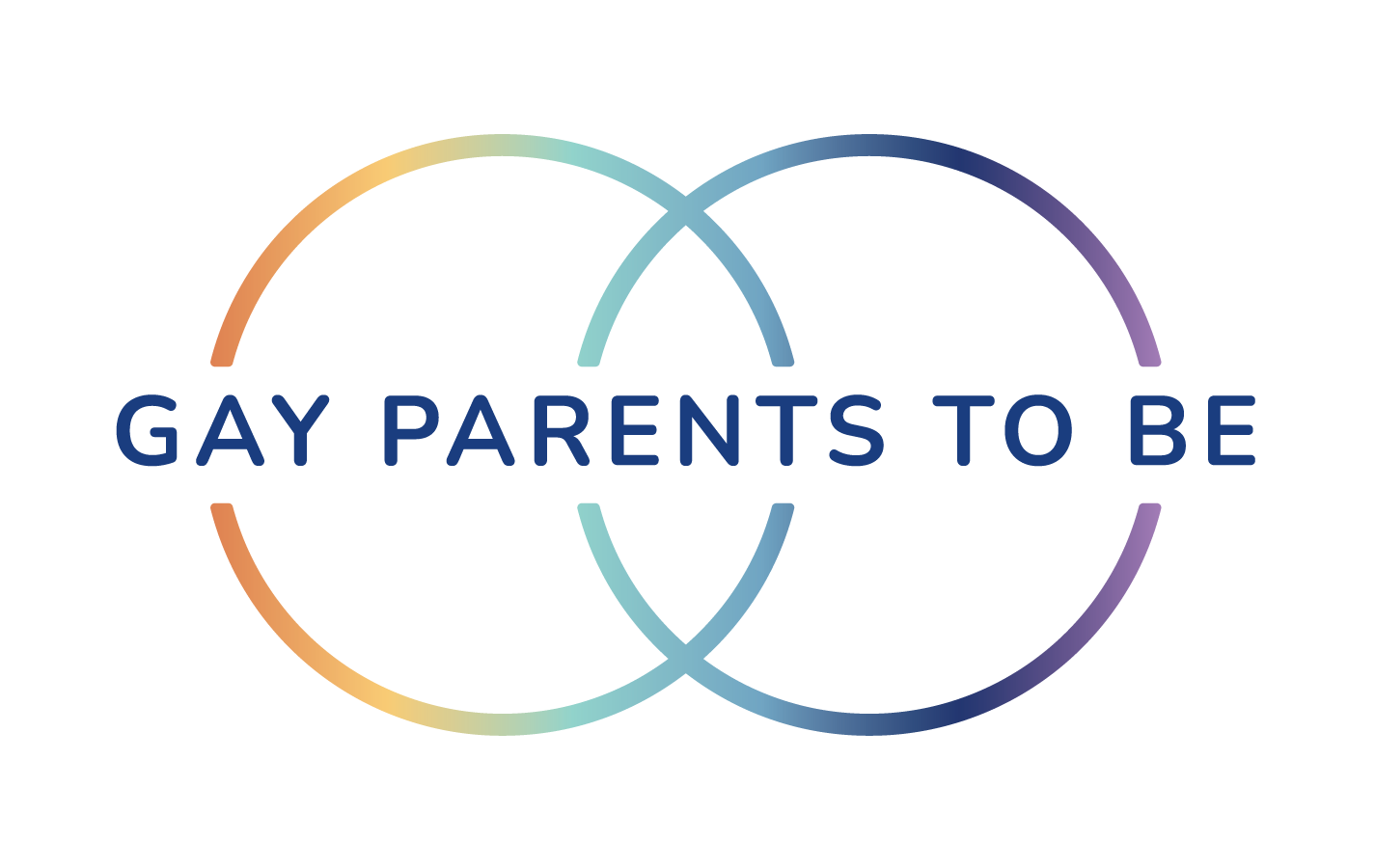Why We Decided to Stop IVF | Emily & Staci's Story (Part 2)
April 25th, 2023 | 9 min. read


After 693 injections, two years of genetic testing, financial obstacles, pregnancy losses and unsuccessful IVF cycles, hopeful moms Emily and Staci make the difficult choice to stop pursuing IVF and begin to reimagine their future family.
In this article:
- The Complexities of LGBTQ+ Family Building
- Why They Stopped IVF Treatment
- What They Wish They'd Known Sooner
- How Friends & Family Reacted
- On Their Place in the Fertility Community
- Why They Share Their Story
- Fertility Insurance Coverage for LGBTQ+ Couples
- Reimagining Their Family's Future
- A New Perspective
Editor's Note: We are so grateful to Emily and Staci for being willing to share their story with us in honor of National Infertility Awareness Week. To learn more about what RESOLVE and other organizations are doing to fight for increased access to fertility and family-building care across the United States, please visit their website.
The Complexities of LGBTQ+ Family Building
When most people in opposite-sex relationships decide they are ready to become parents, the path to pregnancy is generally straightforward. For hopeful parents who are also members of the LGBTQ+ community, family building often comes with added hurdles around everything from biology to finances.
For those facing complex genetic issues, low ovarian reserve, recurrent pregnancy loss, financial obstacles or other additional challenges, the path to parenthood suddenly becomes a long and winding road.
While in vitro fertilization (IVF) and other assisted reproductive technologies are an incredible tool that help thousands of people become parents each year, they never come with a guarantee of success. Sometimes, no matter how hard you try, and how skilled your medical team is, you are met with repeated losses, unsuccessful cycles, and/or end up exhausting your financial resources.
For one couple, the emotional, physical and financial cost of trying to conceive a baby via IVF eventually became too much.
What follows is a story of acceptance, hope, resiliency and love.
Why They Stopped IVF Treatment
Note: Before we dive in, be sure to go read Part 1 of Emily and Staci's journey, Navigating Our Bumpy Road to Parenthood, where they share their experience with IVF, a shocking genetic diagnosis, and losing their baby girl.
Since we last checked in on Emily and Staci, they have undergone three more embryo transfers. Unfortunately, none of those transfers were successful. They then did a cycle of reciprocal IVF using Emily’s embryos (instead of Staci's), but none resulted in a pregnancy. After everything they've been through, the couple decided it was time to take a break and pursue motherhood in other ways.
"The breaking point for us was a combination of financial and mental exhaustion," they share. "We knew we put everything we had into the last two rounds of IVF and all four embryo transfers, and to see none of them resulting in a viable pregnancy was just devastating - we needed to walk away from treatment for the time being."
Making that decision wasn't easy, the couple says. They took a step back to focus on each other and their healing. "We took a lot of trips together and did a lot of therapy," Staci says. "We relied on each other (and our wonderful pets) for emotional reassurance." Staci turned to reading and Emily turned to working as an outlet for their frustration and sadness.
What They Wish They'd Known Sooner
"We wish we had truly understood that sometimes it just doesn’t happen, no matter how hard you work for it," they say. "All that time and money and the physical pain of IVF is truly just for a chance at parenthood, and we were naive in hoping it would be a guarantee - for us, it wasn’t."
In Emily and Staci's case, genetic conditions like Ehlers-Danlos Syndrome, Turner's Syndrome and other challenges led to even more roadblocks to conception. "The odds of us [having a successful pregnancy] are so low that we felt it was best to move in another direction - but it still took a lot of time and therapy for us to make this mindset shift," Staci says.
How Friends & Family Reacted
"We have always been an open book, so when we made the choice to step away from fertility treatments, we were open and honest about it all," Staci says. "Our loved ones have seen just how hard the process has been and they were all so supportive of our path change."
A few people in their life expressed surprise at Emily and Staci's decision to stop fertility treatment, simply because they had been so determined to keep trying until they brought home the baby they so desperately wanted. "We still are [going to bring our baby home]," Staci says. "It just won't be how we originally planned it!"
Catch up on the first part of their journey:
On Their Place in the Fertility Community
Despite hitting the pause button on IVF, "we still feel very much part of the fertility community, because we have stayed part of the community," Staci says. "We may not be in treatment right now, but that option isn’t closed off forever." They say they have made many beautiful connections with new friends on their family-building journey who now continue to support them as they navigate different paths to parenthood.
Why They Share Their Story
"We feel so passionate about sharing our story because we had no clue what we were doing; we felt so alone," Staci shares. Their openness and transparency along the way has been a direct result of their desire to be a resource for others; as well as offering representation of LGBTQ+ fertility warriors.
They also decided to create an Instagram account @thepambystory to provide a space for their loved ones to go and see what was happening in real time. More than anything, they say, they wanted to offer another perspective on what a family-building journey could look like.
Fertility Insurance Coverage for LGBTQ+ Couples
One of the biggest hurdles for most LGBTQ+ couples pursuing biological parenthood is affording treatment. In Emily and Staci's case, they had some insurance coverage thanks to Connecticut state mandates, but it did not include fertility treatment for both female partners in a same-sex marriage/relationship - only one.
Even worse, getting insurance to cover the medical care on their policy required a high level of perseverance and patience.
"We also only got covered by insurance because of Staci’s genetic issues, which we had no clue about until we started this process and underwent genetic carrier testing," the couple says. "We have spent countless hours fighting insurance and advocating for ourselves, trying to prove why we should be covered - we are very frustrated because we have paid significant money out-of-pocket due to only one of us being covered under their clauses which do not protect LGBTQ+ members."
Everyone deserves the chance to grow their family, and organizations like RESOLVE and Fertility Within Reach are working diligently to fight for awareness of these issues, increased insurance coverage, and protective legislation that would help LGBTQ+ individuals and couples get the care they need to achieve their family-building goals.
Want to get involved? Each year, fertility warriors, healthcare professionals, and business leaders join forces across the U.S. for RESOLVE's Federal Advocacy Day. This nationwide advocacy effort centers around meeting with lawmakers to share the importance and urgency of increasing access to fertility and family-building care for all. Visit resolve.org to learn more and join the fight!
Reimagining Their Family's Future
After making the difficult but necessary decision to put a pause on IVF treatment, Emily and Staci decided to instead pour their energy and time into pursuing other paths to motherhood: adoption and embryo donation. "We are excited to see where these paths take us," Staci says. "We just know our baby is out there, and we will be so blessed when we finally get to bring them home."
They have been documenting their journey towards becoming foster parents on social media, and are open to the possibility of using donor embryos to try and achieve a successful pregnancy in the future - if finances allow. Unfortunately, this pathway is also cost-prohibitive for most couples, with a single donor embryo cycle costing around $10,000-$15,000 or more.
Although they are excited about the adventures and possibilities that these new paths may bring, they are still working through their emotions around the likelihood of not becoming biological parents. "This has been one of the hardest parts of our journey," the couple shares. "We never want to say never, but we have had to face the probable reality of not being able to carry and deliver our own children, and that is incredibly difficult."
Even after everything they have been through in the last two years, they remain optimistic that they will become parents. "Plus, you just never know what could happen," Staci says. "We have shifted to an open mindset, trusting that everything will fall into place how it should, because we are meant to be parents - one way or another."
A New Perspective
As they've stepped away from fertility treatment and begun to navigate new pathways to parenthood, Emily and Staci offer some valuable reminders that they hope will resonate with other hopeful parents-to-be:
"You are meant to be parents, and you will be parents - it just may not be how you envisioned it," they offer. "Everything you have been through and will go through will bring you the child that’s meant to be yours." Finally, they say, don't forget to take care of yourself and your partner: "Make time for each other and yourself so that you can recharge on a journey that can be all too exhausting."
With open hearts and a fresh outlook, Emily and Staci look forward to becoming parents soon, and vow to continue to share the ups and downs of their family-building journey so others feel just a little less alone.
Sierra Dehmler is the Content Marketing Manager for Gay Parents To Be and its partner clinic, Illume Fertility. She is also a fertility patient herself. Combining empathy gained on her personal journey with her professional experience in marketing and content creation, she aims to empower and support other hopeful parents by providing family-building resources that educate, inspire and encourage.

